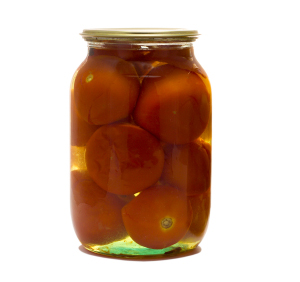How To Preserve Fresh Whole Tomatoes Without Freezing (DIY)
How To Preserve Whole Fresh Tomatoes
Without The Hassle of Canning, Steaming, Peeling, Pressure Cooking, Cutting or Freezing
How to Brine Tomatoes
How to Brine Tomatoes
We get semi-truck loads of (20/Tons) fresh, organic Roma tomatoes seasonally. We use most of these delicious tomatoes to feed our heritage swine-breeds, chickens, ducks, turkeys, game birds, goats, vermiculture (worms) and to also feed our compost. There are always plenty extra to share with friends, family, neighbors, co-op's, buyer's clubs, small family farms and local community members.
Q: What to do with all those extra tomatoes?
A: Brine, Tomato Sauce, Canning, Chili, Freezing, Sun Dry, Dehydrate, Tomato Fight and more...
Brine is a simple salt water solution and it is an easy way to preserve fresh tomatoes for later use. One reason to brine fresh tomatoes is that a balanced brine solution inhibits the growth of bacteria and another is that you can store tomatoes for use during the off-season. Let's face it, our lives are jam-packed with busy schedules and when a great money savings deal comes along, it is not always at the best time. Preserving fresh tomatoes in a simple brine solution saves time and it preserves the entire tomato without hassle.
There are many ways to prepare a brine solution and technically anytime you mix water with added heavy salt content, it is a brine solution. When I preserve fresh tomatoes for home use I use a simple measuring ratio of 1/4 cup salt to 1 quart water. In addition, I like to experiment with brine and mix it up a little. I add fresh peppers, olive oil, basil, garlic, onion chunks, brown sugar or lemon. Below is my recipe and the steps I take.
How to Brine Tomatoes:
1. Select the most firm, red tomatoes, without bruises, scratches or mold.
2. Soak tomatoes in fresh, cool water with added 1/4 cup of lemon juice to every 5/gallons of water.
3. Using a stock pot, heat water with salt on low heat until salt is fully diluted/blended.
4. While the brine solution is blending, wash the 1/gallon glass jars and lids, and prepare labels (date & contents).
5. Once the brine solution is blended, cool it down by placing the entire pot into a large bowl of ice, or just set aside to let cool.
6. While the brine is cooling, rinse and gently dry tomatoes wiping away any debris. Fill the jars only 3/4 of the way with whole tomatoes. Never fill the jar with tomatoes to the top.
6-A. Here is where I add lemon peel, whole or sliced peppers or peeled garlic cloves, onion chunks, brown sugar or herbs. Again, it is important that when filling the jars, allow room to cover all the contents with brine.
7. Once the brine is cool, slowly pour the brine over the tomatoes until they are fully covered with brine. Leave at least 1"-1.5" air gap between the brine solution and the lid.
7-A. Here is where I fill the gap with olive oil or lemon juice, otherwise I fill with more brine and seal with screw-on lid.
8. Using a clean, dry towel carefully dry the outside of the jars and affix labels.
9. Store filled jars in a safe, dark, and cool place.
10. I start using tomatoes within 24/hours and they last us about 1/year...then they are all gone.
Please share your recipe and ideas. I would like to hear from you. Thank You!
NOTES & WARNINGS
Use food grade salt (Himalayan, Rock, Pink, Organic, Sea Salt, etc.) Do not use pool salt
Use potable water (Reverse Osmosis, Bottled, Sparkling etc.)
Use food grade plastic and glass
Never use copper stock pot to heat brine
Never use copper to store brine tomatoes
When storing, a
Always secure glass from breaking
Never leave 55/gallon drums or any buckets or jars filled with liquid, uncovered. Always keep stored liquids covered with tight lid.
If any mold is present in jar, on tomato or other ingredients in the jar "DO NOT EAT". Discard Immediately!
ENJOY!






Comments
Post a Comment